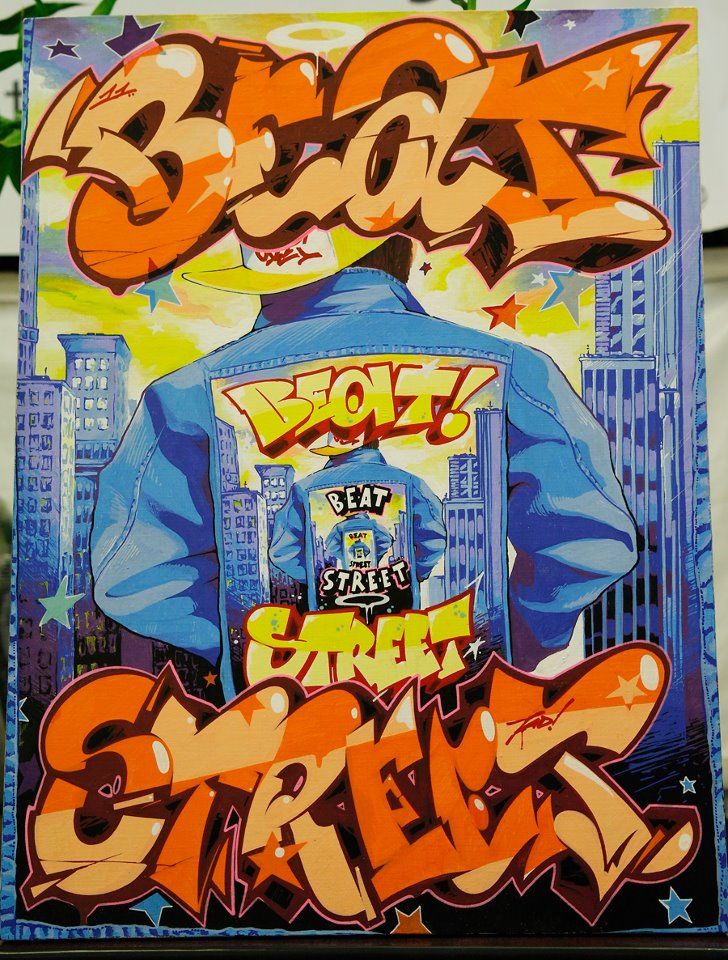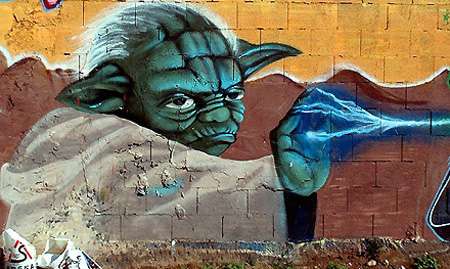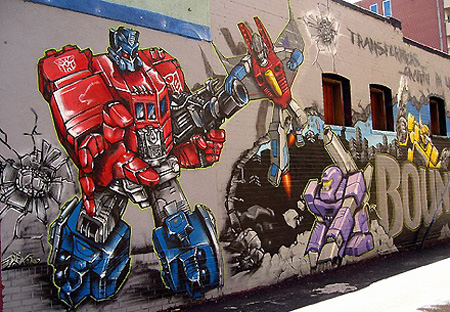Movie Art Graffiti

Art and artists play a major role in the motion picture industry. From set design and construction to story boards, animation, special effects, computer graphics, and the art that adorns the walls of television and movie sets, artists are involved in virtually every aspect of the business. Hollywood needs and employs artists, but making a career move from artist to "Hollywood artist" is not an easy task. Competition is heavy and job requirements can be highly specific. Even geography plays a significant role in the forging of business arrangements between artists and the film industry.

Tom St. Amand is a case in point. A Southern California native and an expert in construction and operation of animated figures, his credits include "James and the Giant Peach," "The Hulk," Star Wars," "Jurassic Park," and more. St. Amand watched Sinbad movies as a youngster, he didn't focus so much on being entertained by the plot like people in other parts of the country. The fact that he lived where these movies were created made it natural for him to be more curious about how the monsters worked and looked so real.

Special effects continued to fascinate him as he went on to major in film at UCLA and take courses in animation while there. In addition, he sculpted and built figures at home on his own and when he was ready, took them with him on job interviews. He was first hired as an assistant prop builder, gradually received more significant tasks and responsibilities, did a stint at Lucasfilms, and finally ended up with his current production company.

A production company, production house, production studio, or a production team provides the physical basis for works in the realms of the performing arts, new media art, film, television, radio, comics, interactive arts, video games, websites, and video. Production teams are a group of technical staff who produce the media. Generally the term refers to all individuals responsible for the technical aspects of creating of a particular product, regardless of where in the process their expertise is required, or how long they are involved in the project. For example, in a theatrical performance, the production team includes not only the running crew, but also the theatrical producer, designers and theatre direction.

The production company may be directly responsible for fundraising for the production or may accomplish this through a parent company, partner, or private investor. It handles budgeting, scheduling, scripting, the supply with talent and resources, the organization of staff, the production itself, post-production, distribution, and marketing.

Production companies are often either owned or under contract with a media conglomerate, film studio, entertainment company, or Motion Picture Company, who act as the production company's partner or parent company.

This has become known as the "studio system". Independent studios usually prefer production house (see Lionsgate), and sometimes as a production studio or production team (see Amazon Studios or Rooster Teeth).

In the case of television, a production company would serve under a television network. Production companies can work together in co-productions. In music, the term production team typically refers to a group of individuals filling the role of "record producer" usually reserved for one individual. Some examples of musical production teams include Matmos and D-Influence

Entertainment companies operate as mini conglomerates, operating many divisions or subsidiaries in many different industries. Warner Bros. Entertainment and Lionsgate Entertainment are two companies with this corporate structure.

It allows for a single company to maintain control over seemingly unrelated companies that fall within the ranges of entertainment, which increases and centralises the revenue into one company (example: a film production company, TV production company, video game company, and comic book company are all owned by a single entertainment company). A motion picture company, such as Paramount Pictures, specializing "only" in motion pictures is only connected with its other counterpart industries through its parent company.

Instead of performing a corporate reorganization, many motion picture companies often have sister companies they collaborate with in other industries that are subsidiaries owned by their parent company and is often not involved in the making of products that are not motion picture related. A film production company can either operate as an affiliate (under a contract) or as a subsidiary for an entertainment company, motion picture company, television network, or all, and are generally smaller than the company they are partnered with.
